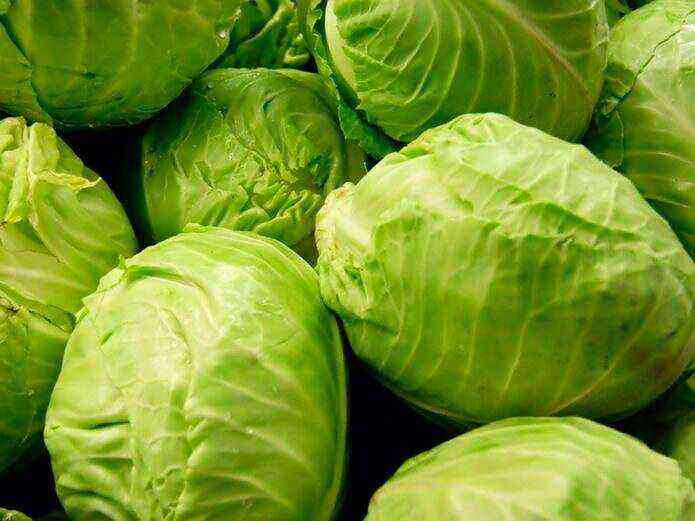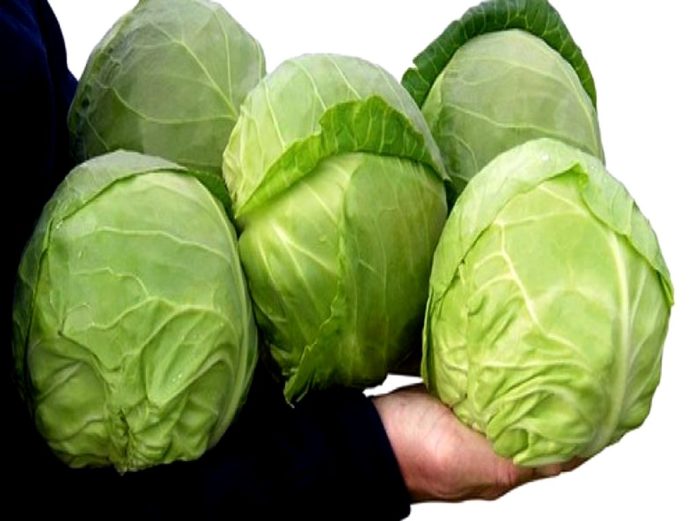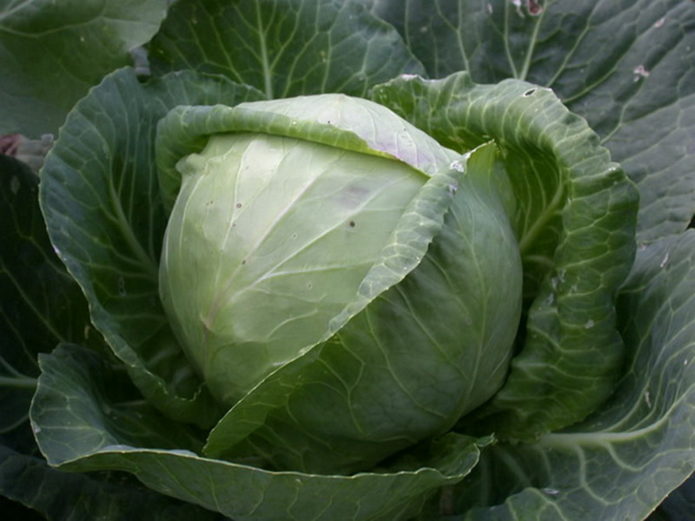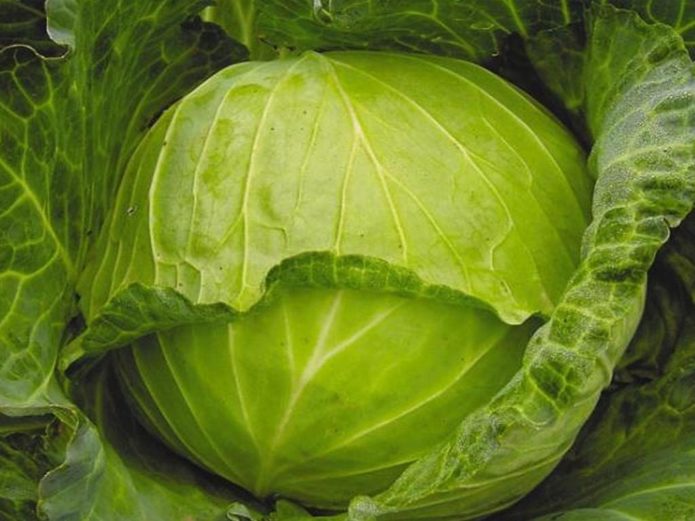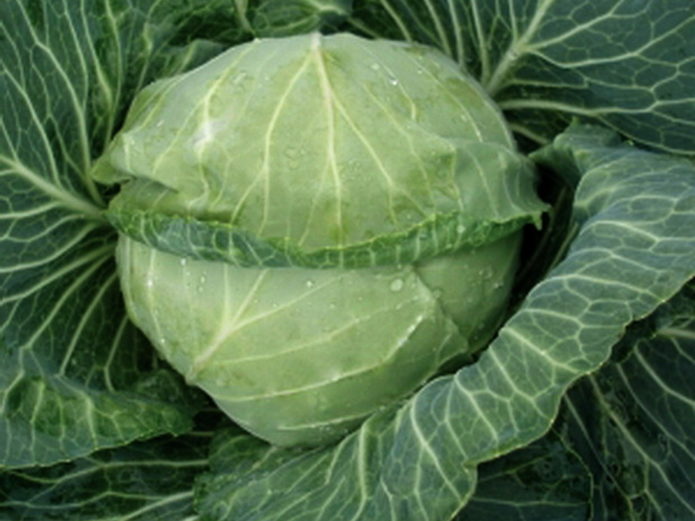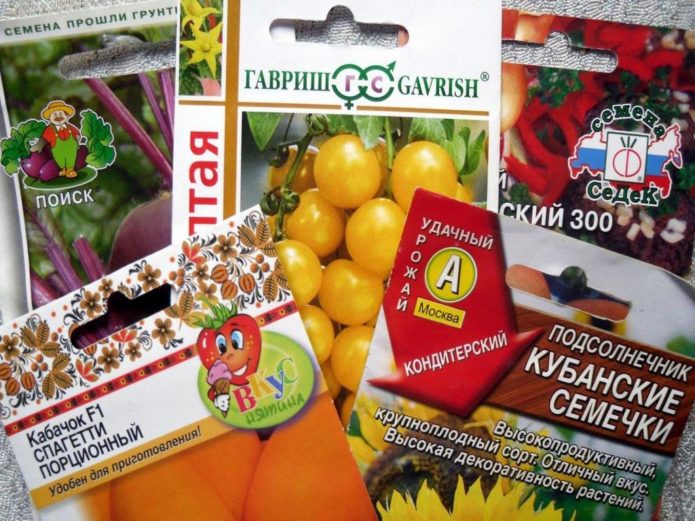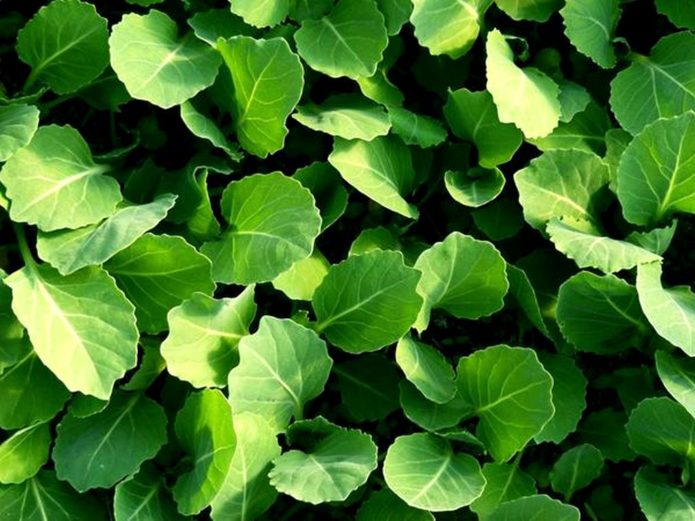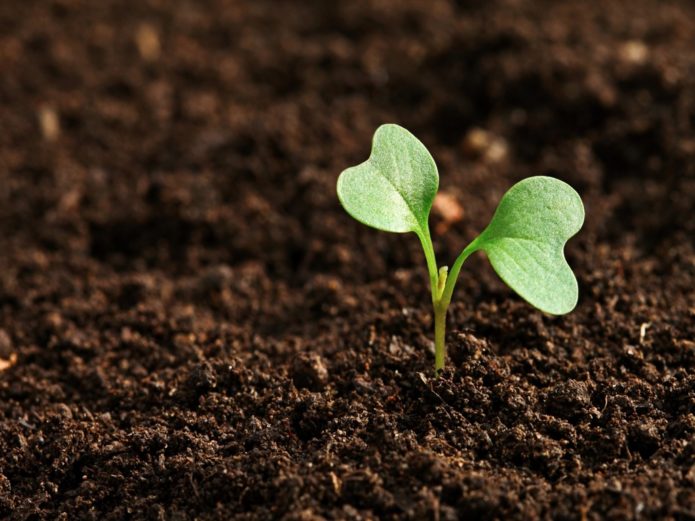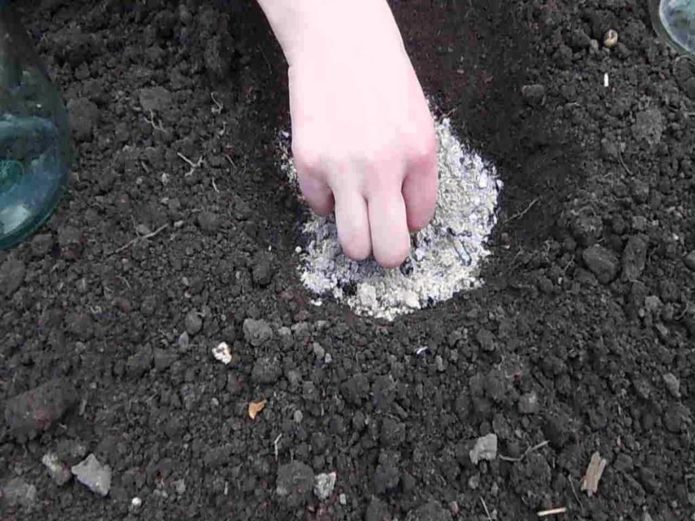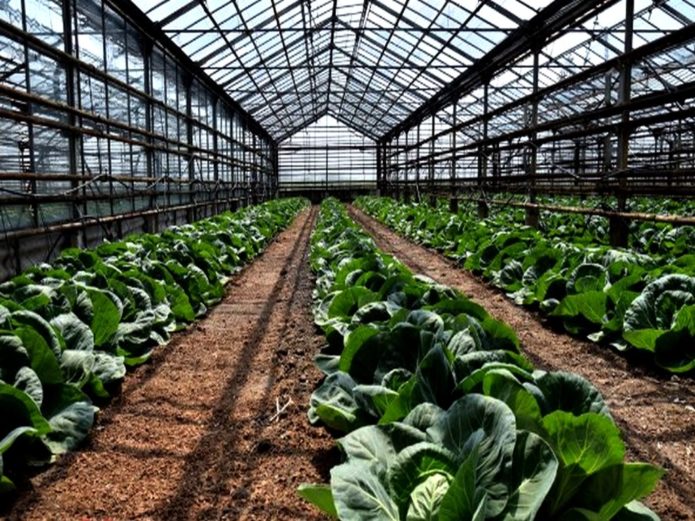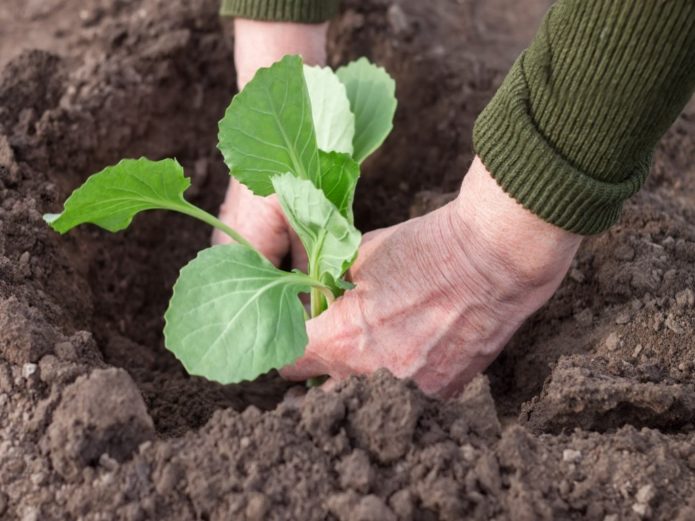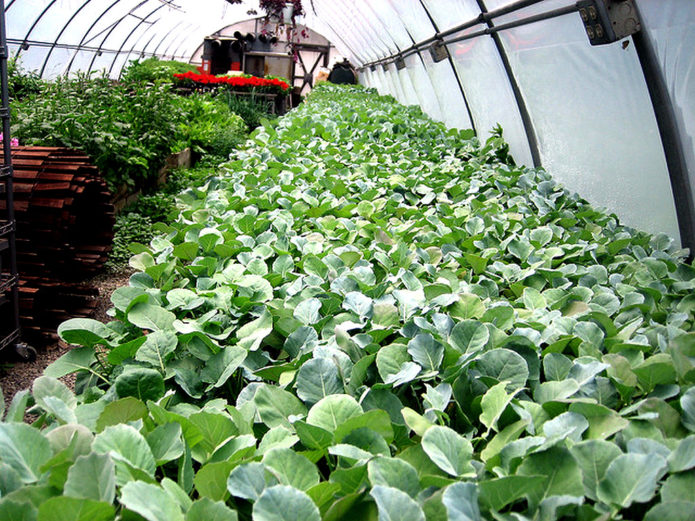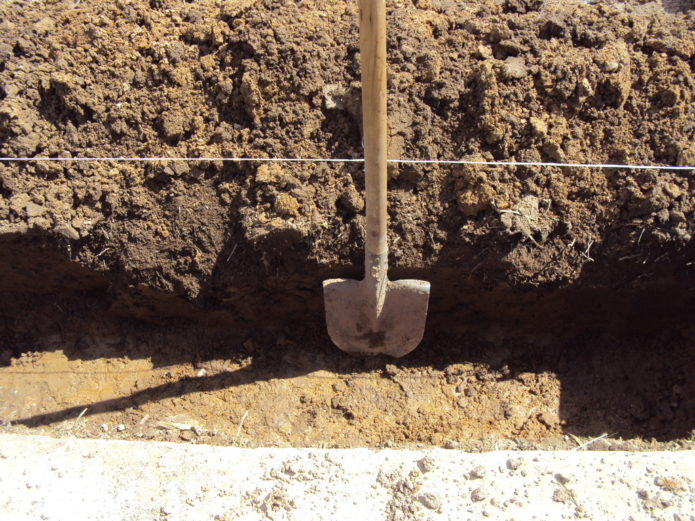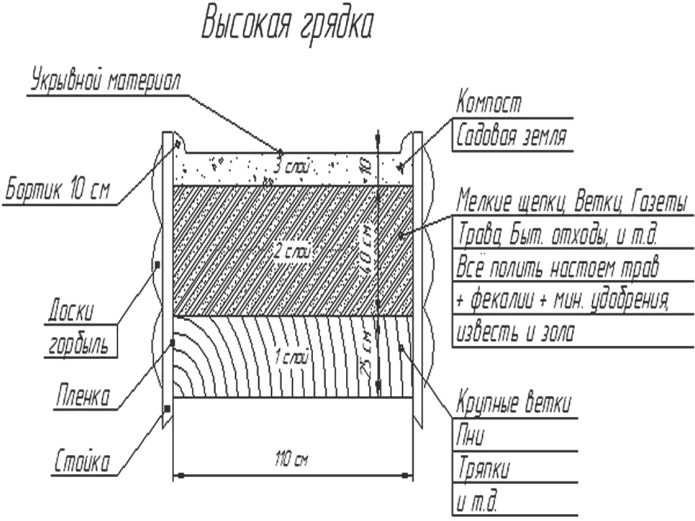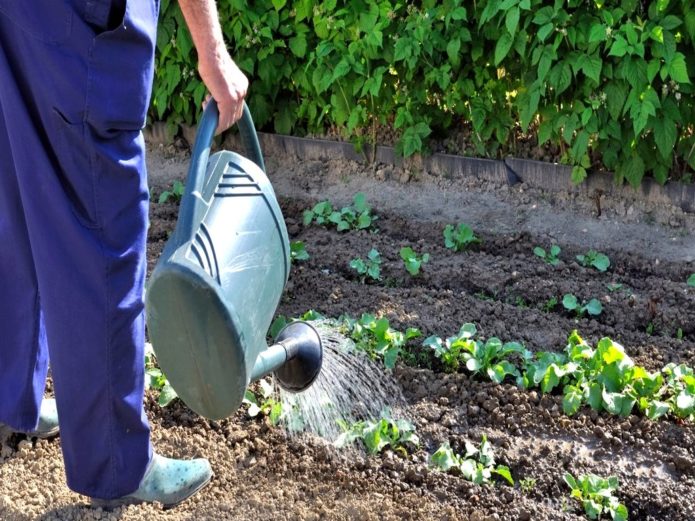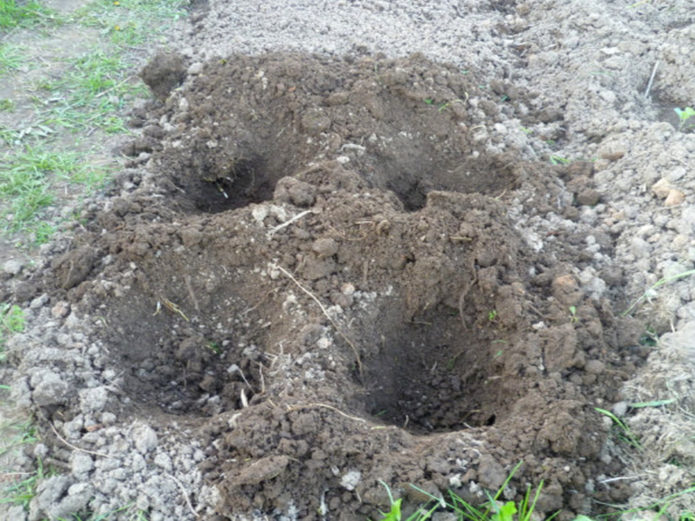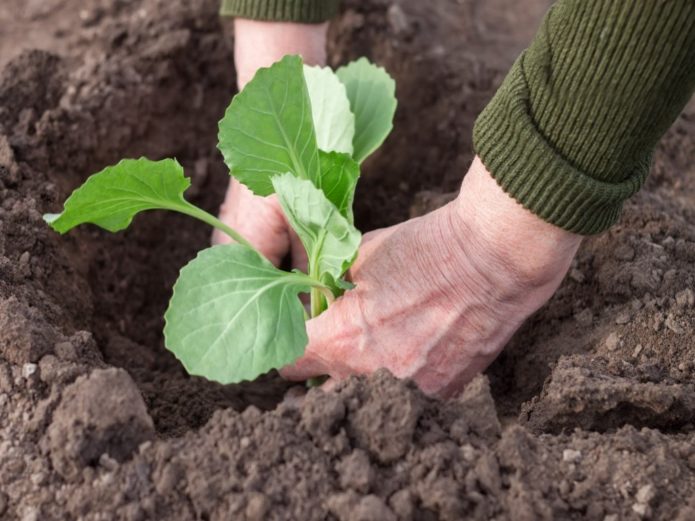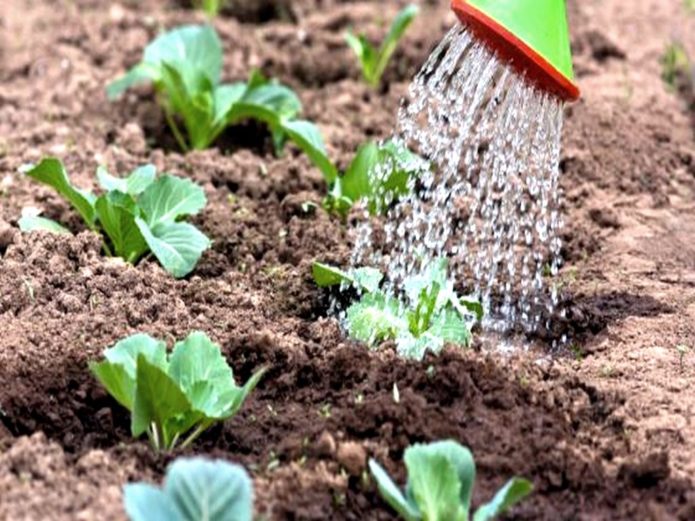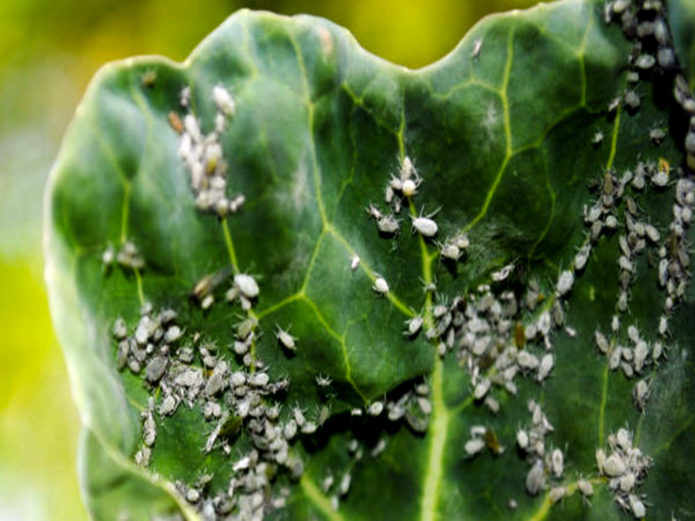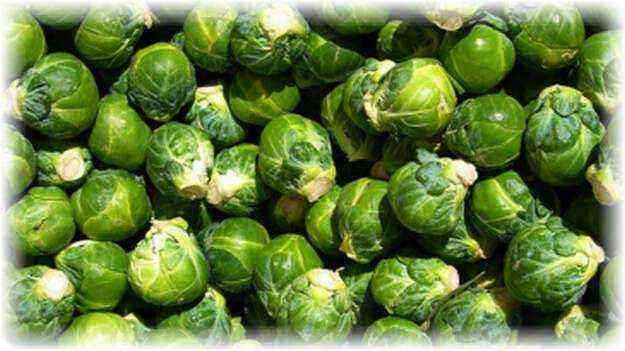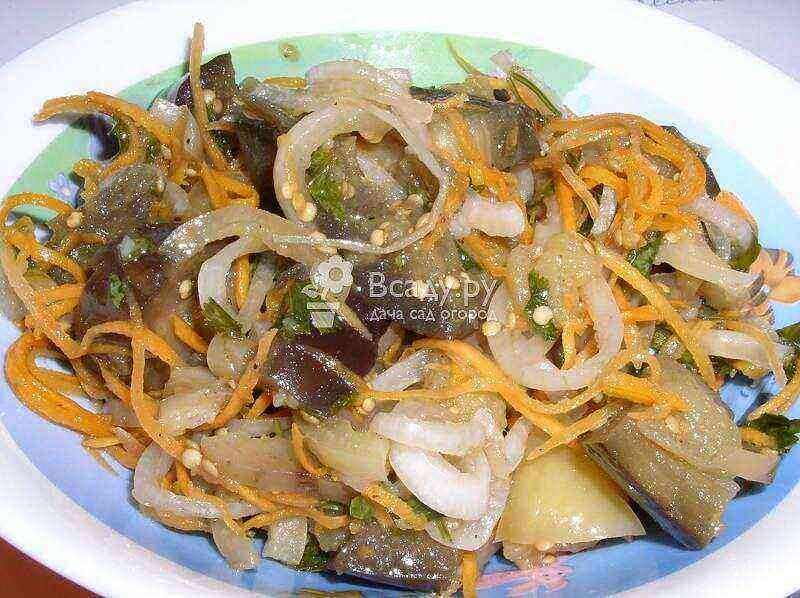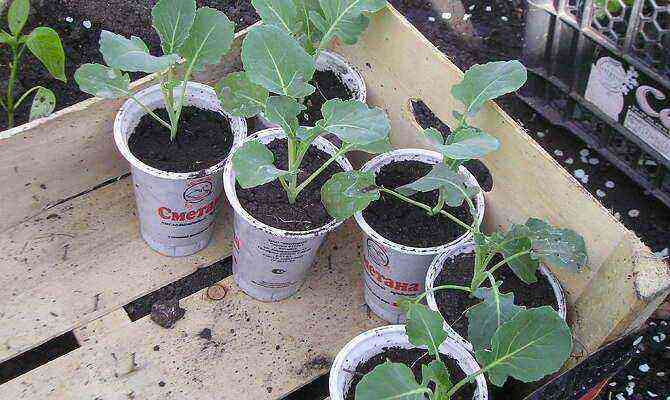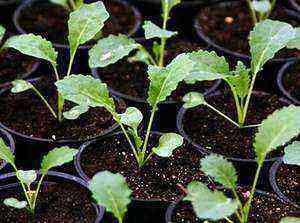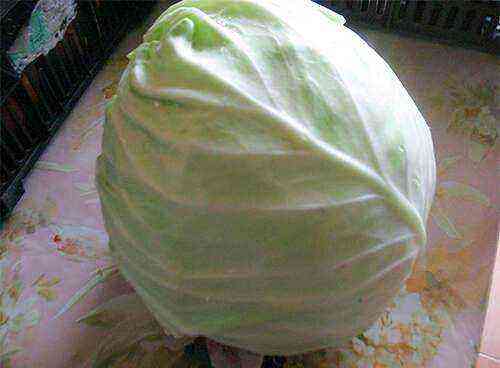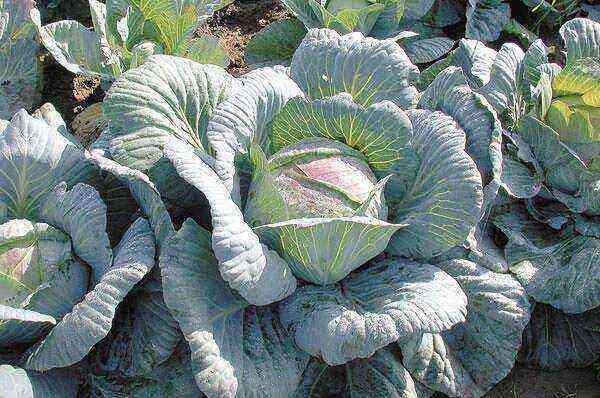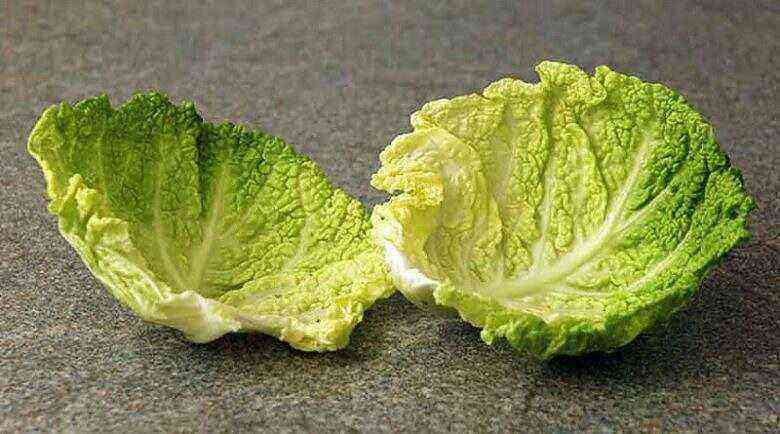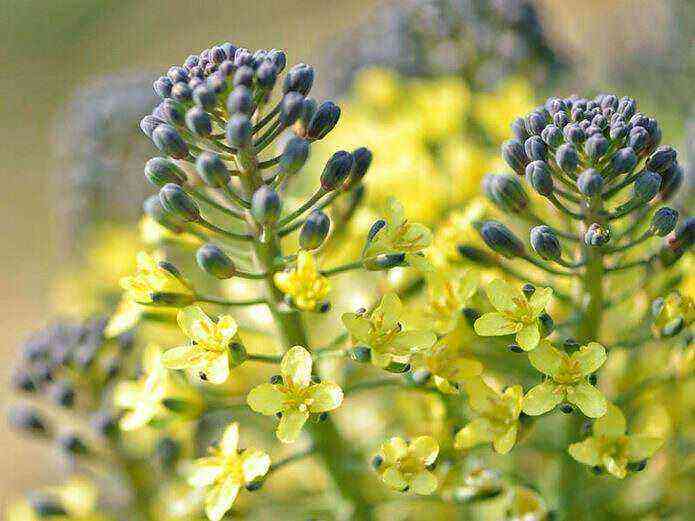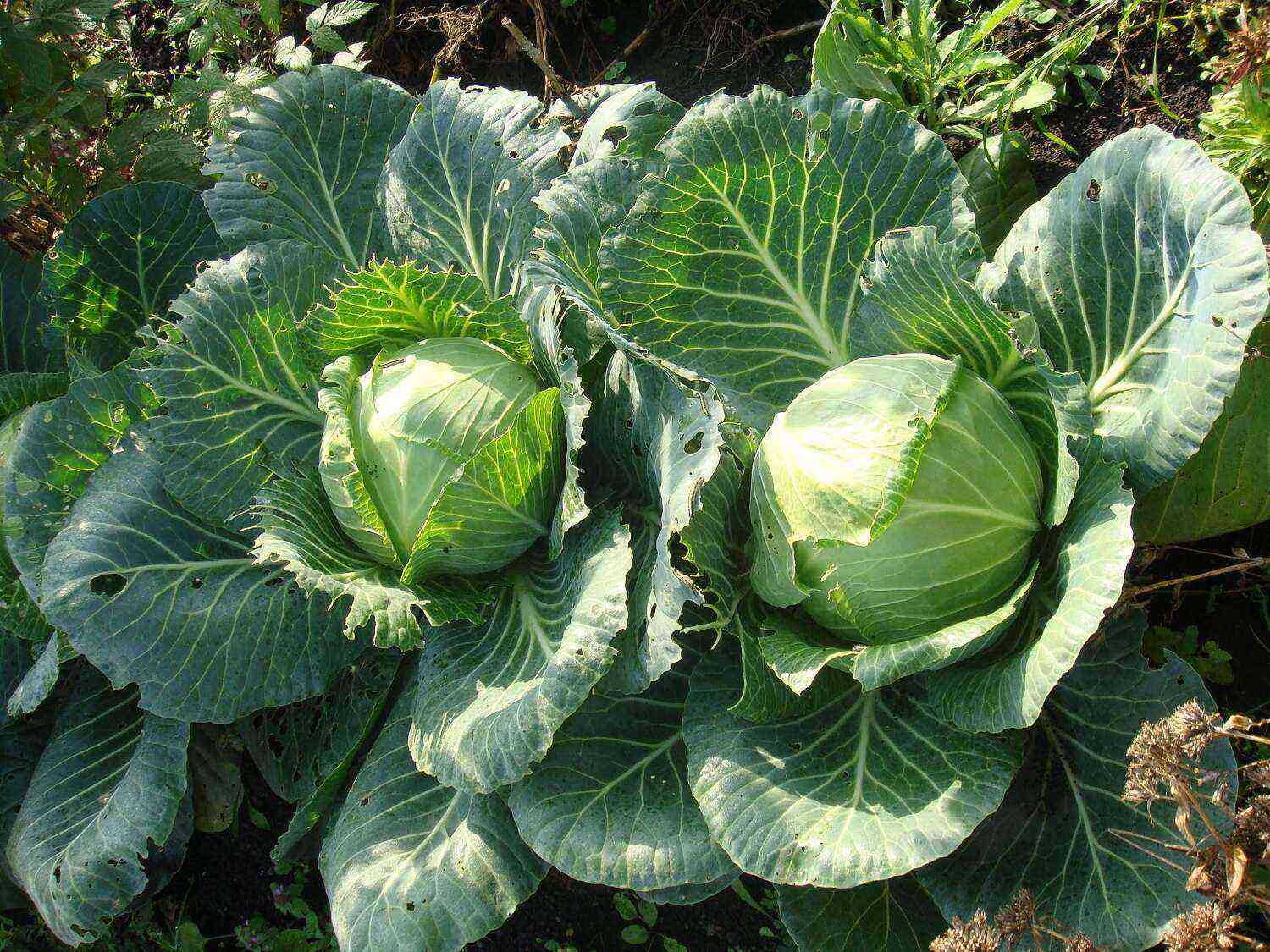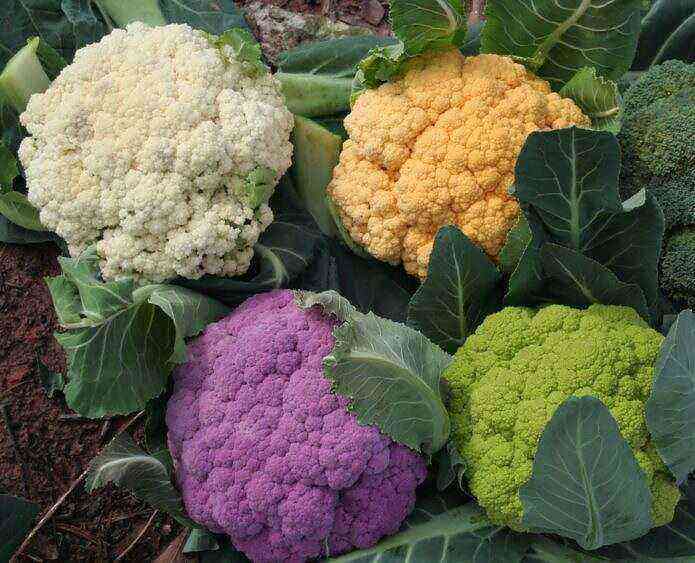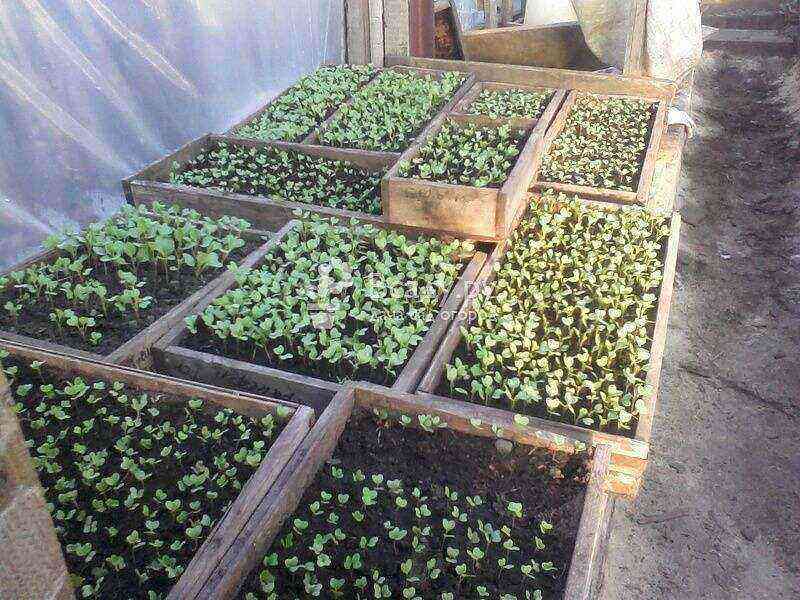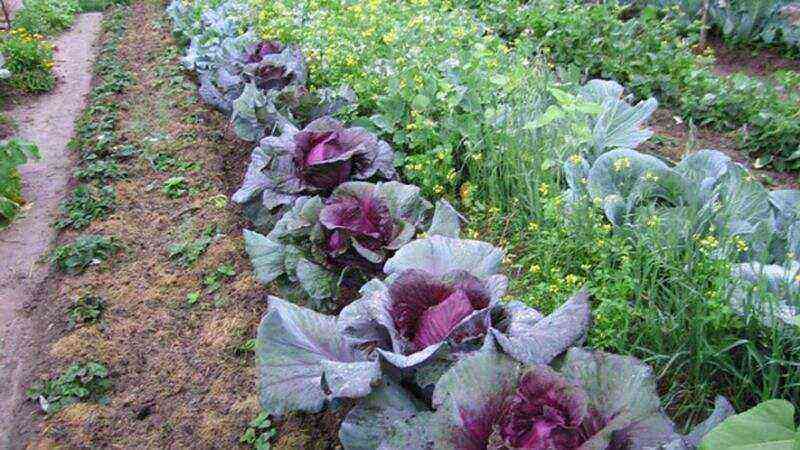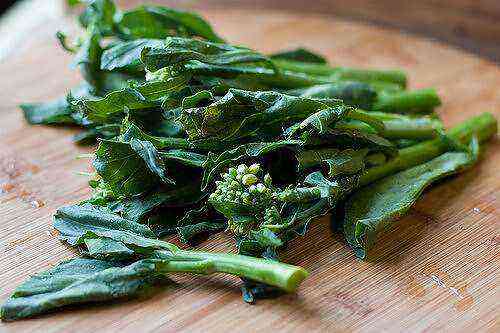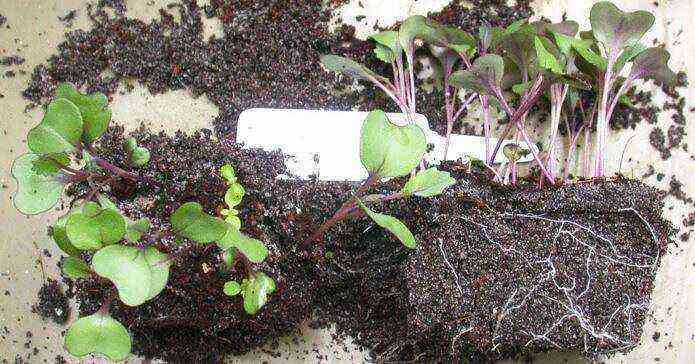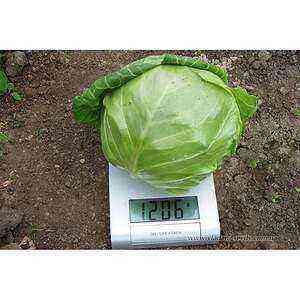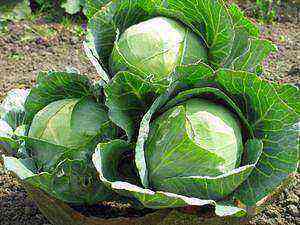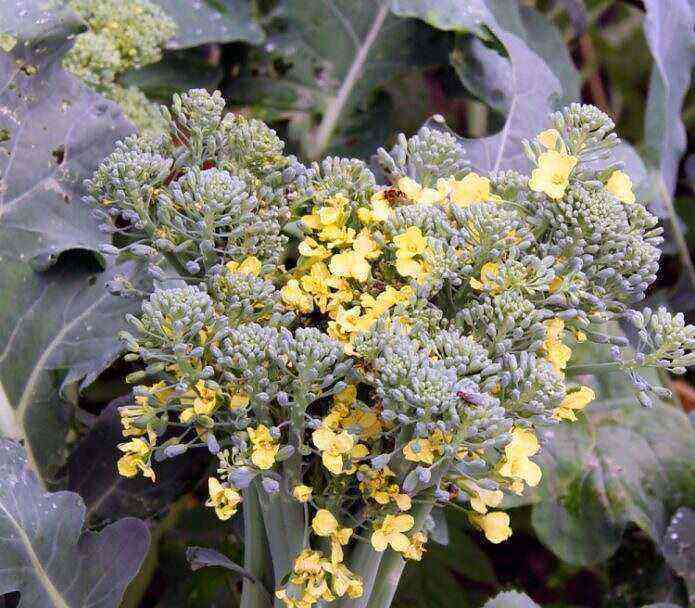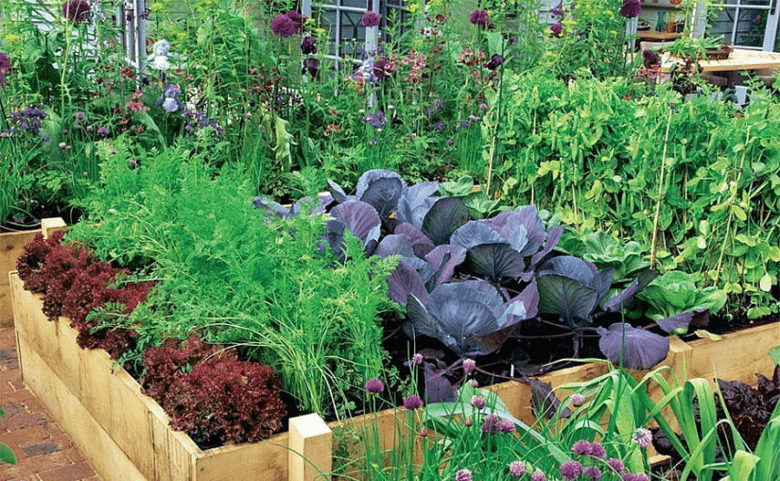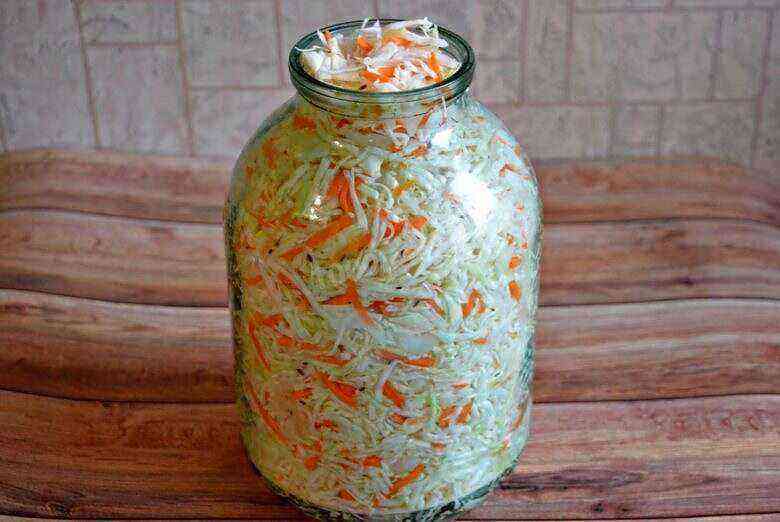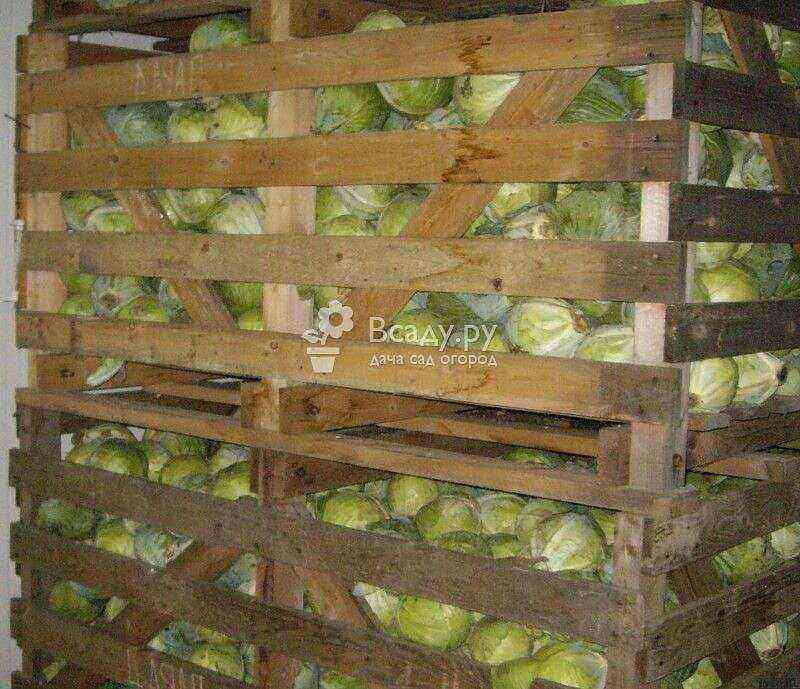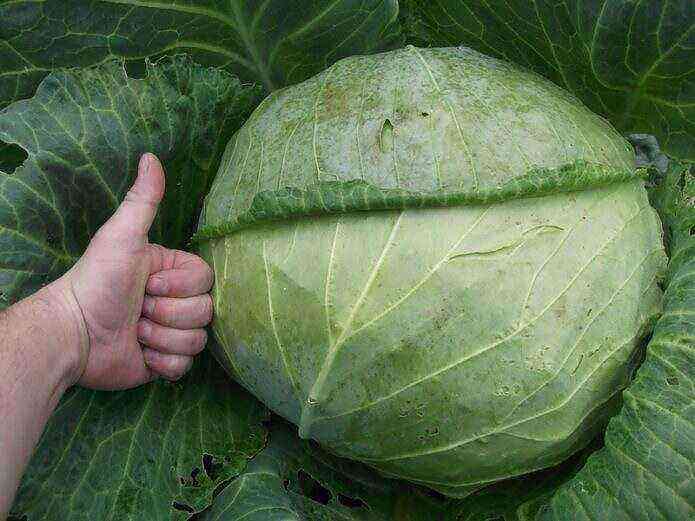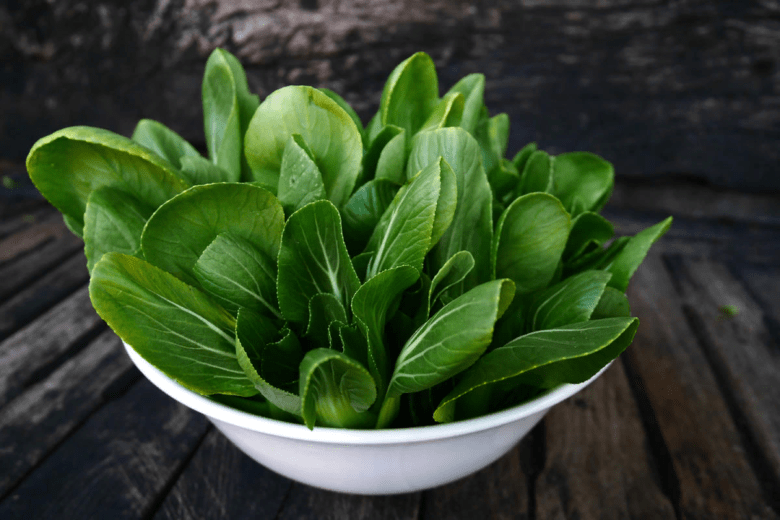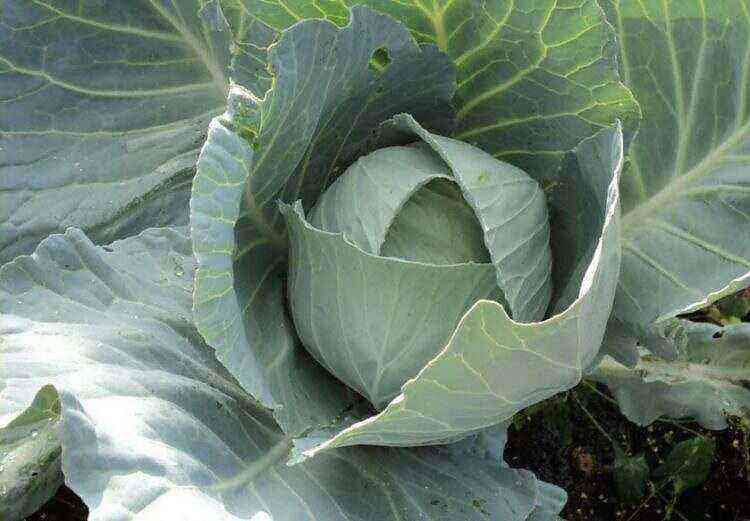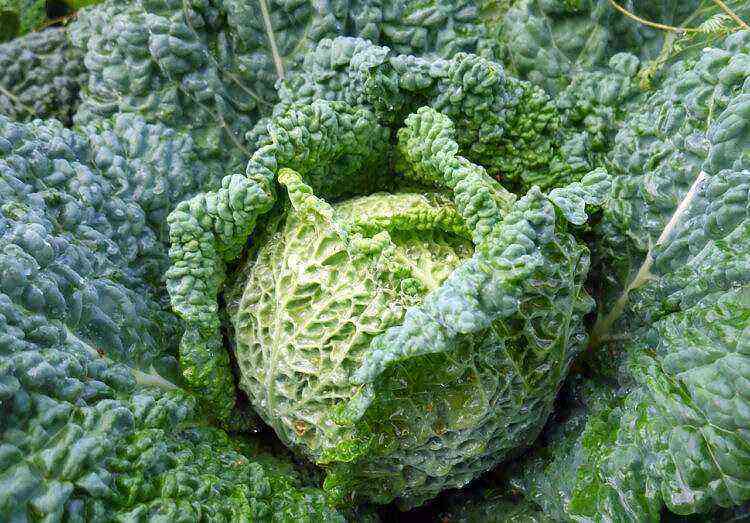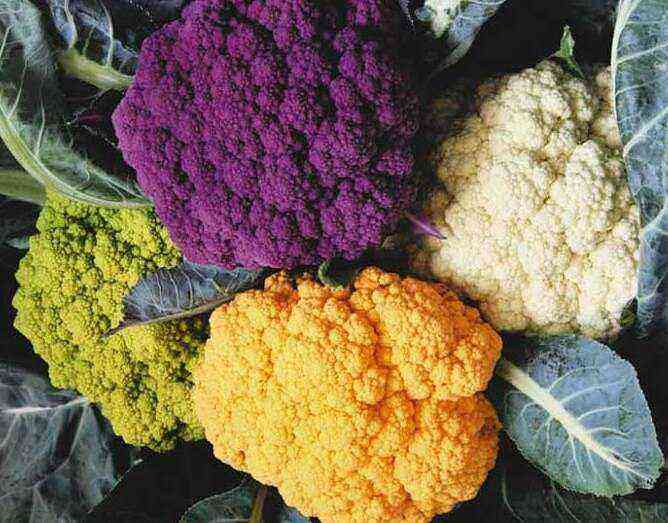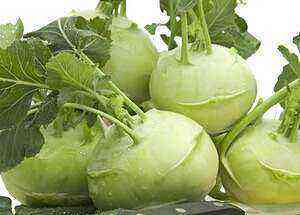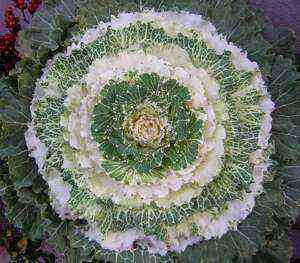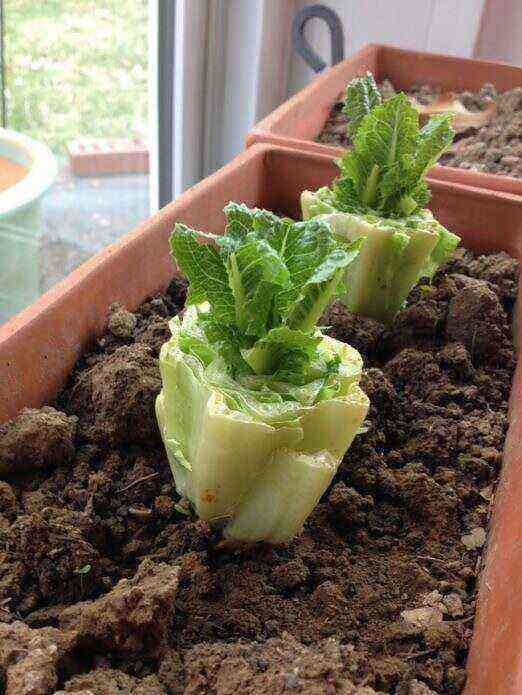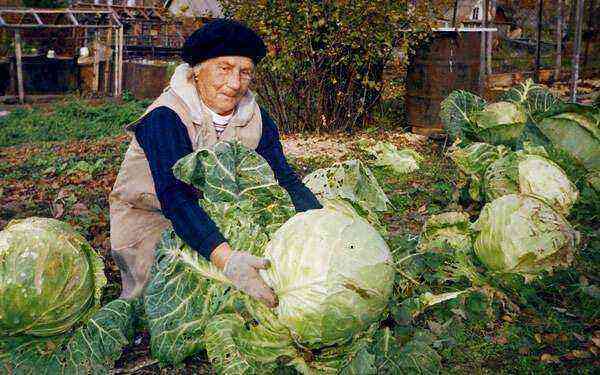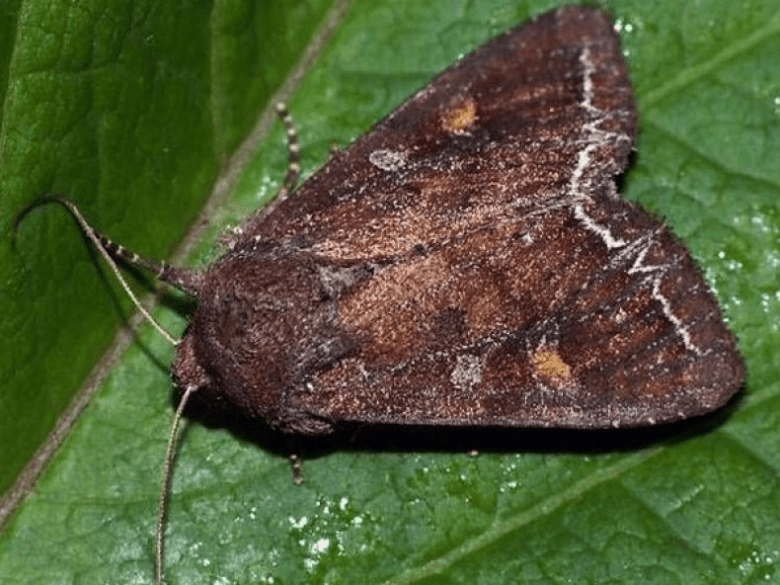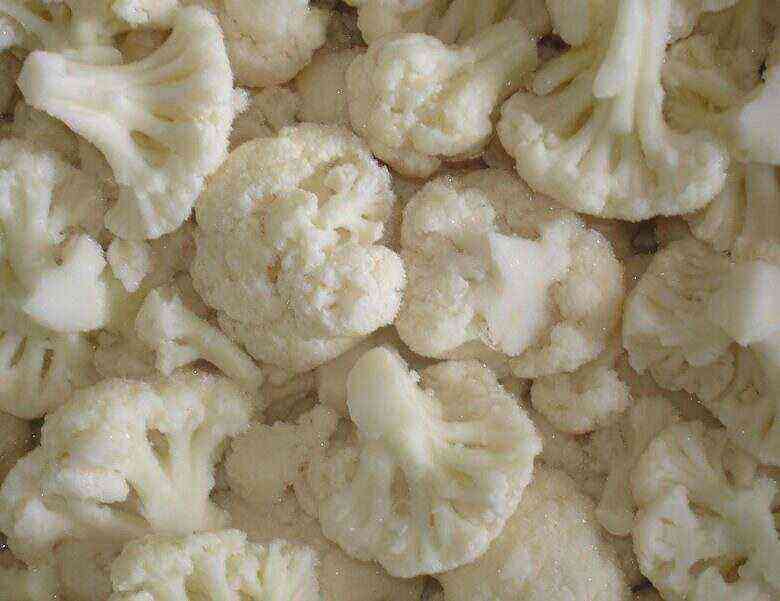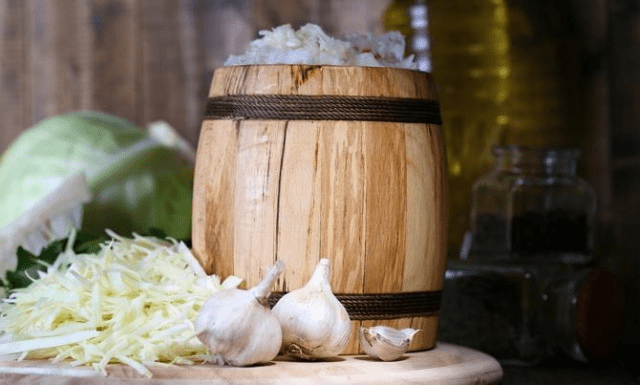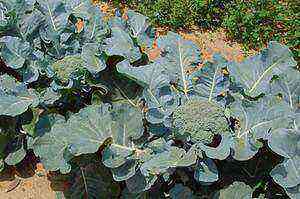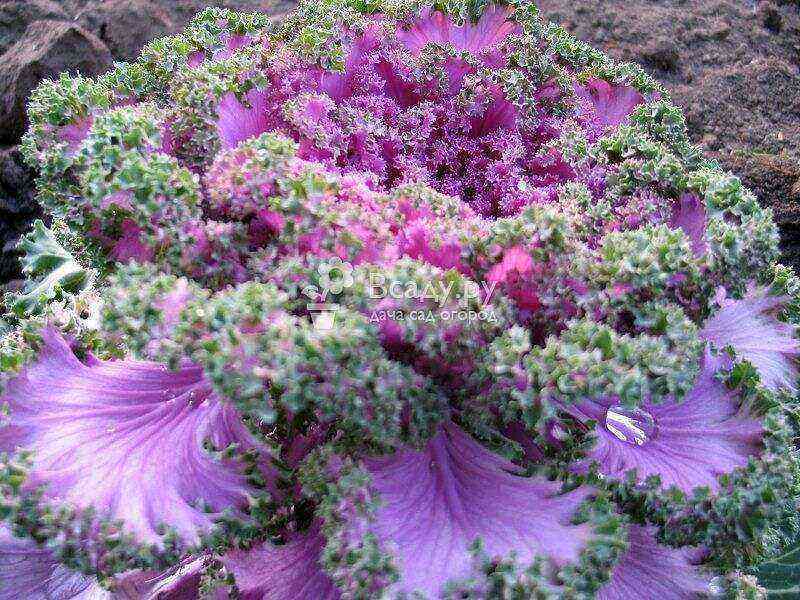White cabbage is a familiar and favorite vegetable in our country. This culture can often be found in personal plots, as the plant is unpretentious, frost-resistant, with a powerful root system, although it loves humid air and long daylight hours. Early, medium and late varieties are distinguished by early maturity. We offer you to get acquainted with the varieties of early white cabbage and the peculiarities of its cultivation in various climatic zones of Russia.
Distinctive features
Eating fresh cabbage is the best way to get your first vitamins after a long winter period. Early vegetables are tasty, juicy, with delicate leaves, although they are not stored for a long time. Heads of cabbage are small, friable, easily cracked, unsuitable for fermentation. The color of the plants is bright, light green. The ripening period for early cabbage varieties is 90–120 days, for hybrids – 70–100 days.
Early maturing white cabbage varieties are juicy, with delicate leaves
Best early white cabbage
Experienced gardeners and farmers prefer to grow versatile varieties.
Universal grades
Their main characteristics include the unpretentiousness of plants to weather conditions and frost resistance.
The early white cabbage Golden hectare is widely known to the gardeners of our country.
Table: universal varieties of cabbage
Variety Name Vegetative
period, days Head mass, kg Productivity,
kg / m2
Ранний
Июньская
90–110
1–1,5
2–6
Казачок F1
90–110
0,8–1,7
3,5–5
Номер первый
Грибовский 147
100–110
0,9–3
2,5–6,7
Золотой гектар 1432
100–110
1,6–3,3
5–8
Трансфер F1
90–100
0.7–1.5
7
Let’s take a closer look at some of these varieties.
The June
Early ripe cabbage. The growing season is 90–110 days. Growing area – all regions of Russia, Moldova, Ukraine.
June cabbage variety is grown in all regions of Russia
Features of the variety:
- Compact rosette up to 40-50 cm.
- Leaves are light green, semi-raised.
- Round head of cabbage, medium density. Little prone to cracking.
- Amicable ripening of vegetables.
- Withstands frosts down to -5 °.
- It is resistant to the invasion of the cruciform flea beetle and the cabbage fly.
Video: growing June cabbage in Bashkiria
Number one Gribovsky 147
The variety is early maturing. The ripening period from sowing for seedlings to harvesting is 100-110 days. Zoned throughout the territory of the Russian Federation.
White cabbage variety Gribovsky 147 is zoned throughout Russia
Key Features:
- Medium-sized cabbage rosette 40–80 cm.
- Leaves are green with a slight waxy bloom, half-raised.
- The head of cabbage is round, short-oval with a delicate inner structure. Susceptible to cracking.
- Amicable ripening of vegetables.
- The variety is drought and frost resistant.
- Susceptible to keel and vascular bacteriosis.
Transfers
This is an early hybrid. The ripening period is 90-100 days. Recommended for cultivation in all climatic zones of Russia.
Early Transfer Hybrid has worked well in home gardens across the country
The originality of the variety:
- The rosette of cabbage is compact up to 40 cm.
- Leaves are light green, semi-raised, bubbly with a slight waxy coating.
- The head of cabbage is round, loose. Not prone to cracking.
- Withstands frosts down to -5 °.
- Well transported.
- Resistant to diseases and pests.
Popular varieties in the regions of Russia
But there are also specially bred cabbage varieties for different climatic zones.
Variety No. 206 Polyarny K-XNUMX was bred specifically for regions with an unstable cold climate
In our country, there are 342 varieties and hybrids of this culture. We invite you to get acquainted with popular varieties that have been tested in local conditions and have shown good results.
Table: zoned white cabbage
Variety Region Name Vegetative
period, days Head mass, kg Features Early Moscow region
and middle band
Russian Dumas F1 90 1,5 Well tolerated
thickened plantings. Express F1 70–90 0,9–1,3 Resistant to bloom and
cracking heads. Baroque 85–90 0,9–1,1 Heads of cabbage do not crack. Ditmarskaya 100-110 1,5-2 Inclined to overripe,
should be timely
to harvest. Point 100-115 0,9-1,2 Well transported. Northwestern
region Solo F1 85–94 1.2–1.5 Resistant to vascular
bacteriosis. Susceptibility
to the keel average. Start F1 85–94 1,2–1,5 To the causative agents of the main
disease resistant. Siberia and the Urals Nozomi F1 80–100 1–1,8 Cold-resistant. Withstand
excessive moisture
resistant to black stem and
bacteriosis. Vegetables are not
растрескиваются.
Скороспелка
85–102
0,9–1,3
Заполярье F1
90–97
1–1,5
Малахит F1
90–130
1,3–1,5
Номер первый
Polar K-206 100-110 1,6-3,2 Southern region Sugar crunch 80-90 0,7-2 Excellent taste and
commercial qualities. Asian express
F1
95–100
1,5–2
Невосприимчив к сосудистому
bacteriosis. Vegetables are not
cracking. Derbent local
улучшенная
80–114
0,7–2
Подвержен бактериозам.
Фарао
90–100
1,4–2
Устойчив к фузариозному
wilting. Far East Surprise F1 90–100 1–1,5 Amicable ripening of the crop.
does not crack. Marshmallow F1 95-115 1,5 Juicy and sugary taste
vegetables. Endures firmly
flowering, diseases.
Video: a review of new varieties and hybrids of early white cabbage
Major seed producers
There is a wide range of vegetables, flowers and herbs on the market. To ensure the high quality of their products, the companies have their own full-cycle production: from growing plants to packaging and storing seeds. You can buy it both in online stores and on the shelves of retail outlets throughout the country.
Aelita, Manul, Gavrish, SeDeK, Poisk, Russkiy Ogorod-NK, Akvarel – the main seed producers in Russia
Purchase high-quality seed from manufacturers and their authorized dealers. The following agricultural firms are widely known in Russia: Aelita, Manul, Gavrish, SeDeK, Poisk, Russkiy Ogorod-NK, Akvarel, etc.
The originality of planting early cabbage
To obtain an early harvest, white cabbage is grown by the seedling method, which avoids frosts and shortens its ripening period by 45-60 days before transplanting into open ground.
To obtain an early harvest, white cabbage is grown by the seedling method.
Main stages
- Preparation of a nutrient mixture, a fertile and breathable base. It is best not to use soil from garden beds due to possible infections and diseases.
- Disinfection of the earth (spill the soil with a bright pink solution of potassium permanganate).
- Processing of planting material (warm up the seeds for 20 minutes in water at a temperature of + 50 °).
- Sowing (independently calculate the optimal planting time for your area).
- Thinning seedlings or picking seedlings when real leaves appear.
- Regular watering of cabbage. Humidify with a spray bottle.
- Illumination of seedlings up to 12-15 hours a day. Conduct fertilizing with mineral and organic fertilizers.
- Hardening of plants. Ventilation of premises.
- Prevention of infectious diseases. If the first signs are found, remove damaged seedlings!
Table: favorable sowing dates for early cabbage in the regions
Name Middle band
Russia Central
Chernozem
Siberia region and
Ural South
Far East region Belokocannaya March 15-25 March 1-15 March 5-10 March 10-15 February 10-15 April XNUMX-XNUMX
It takes 4-6 days for the first shoots of white cabbage to appear
The cultivation of cabbage by the seedling method is popular in our country, since in many regions there is an unstable climate with variable weather conditions, cold snaps and even frosts. It is used in the Moscow region and Siberia, in the Urals and the Far East. Remember that a good harvest starts with strong and healthy seedlings! The seedless method (direct sowing of seeds into the ground) is used when growing early white cabbage in the southern and southeastern regions.
Direct sowing of cabbage seeds into the ground is used in the southern regions of our country
Features of cultivation
This crop is planted in well-lit, open areas with neutral soil acidity. Planting scheme for early varieties 45 × 25 cm. The best predecessors are onions, pumpkin and legumes.
Let’s consider the possible methods in detail.
Greenhouse cabbage
The preparatory steps for seed and soil processing are standard. However, it is important to know some of the features of this method:
Growing white cabbage in a greenhouse is used to obtain an early harvest
- We sow early varieties at the end of February at + 20 + 25 °.
- We use a 3 × 1 cm scheme, planting depth 1 cm.
- When seedlings appear, lower the temperature to + 10 °.
- In two weeks the optimum temperature is + 17 + 18 ° during the day and + 9 ° at night.
- We pick seedlings or thin out the seedlings.
- We feed with standard mineral and organic fertilizers.
- In early April, if there are 3-4 leaves, we transplant the cabbage to a permanent place in protected ground (hotbeds or greenhouses).
- Water consumption rate – 8 l per 1 m2.
- We ventilate the room every other day.
- After three weeks, we carry out the hilling of the plants, we repeat the procedure after 10 days.
Remember that the seedlings of this crop do not like shading! The main rule is to observe the temperature regime so that vegetables do not stretch, but grow and develop.
Video: sowing cabbage for seedlings in a greenhouse
Features of breeding in the Moscow region and central Russia
- We sow seeds for seedlings in a greenhouse in early April to a depth of 0,5 cm at a temperature of + 16 + 18 °.
- At the age of 7–9 days, we make a pick.
- We feed with mineral and organic fertilizers.
- Water 1-2 times a week.
- We ventilate the room every other day.
- We transplant seedlings into open ground in mid-May.
In the Moscow region, we transplant cabbage seedlings into open ground in mid-May
The originality of cultivation in Siberia and the Urals
You can get the harvest of early cabbage in this climatic zone earlier than in the open field by cultivating plants in closed ground:
Landing features are as follows:
- We plant seedlings in heated greenhouses at the age of 35–45 days, and in greenhouses without heating and in greenhouses – 45–55 days.
- Terms: in the first decade of April, we plant the plants in heated rooms, in the third decade of April – without heating and in greenhouses.
- Planting scheme: 25 × 45 cm.
- We transplant into open ground at the age of 55-60 days at the end of May.
Transplanting cabbage in Siberia and the Urals is carried out at the age of 55-60 days at the end of May
Create tall or warm beds
Using this method will allow you to grow cabbage in personal plots where groundwater is close. It is this feature that is characteristic of the soils of the Northwestern region of Russia, Siberia and the Urals. In addition, it is more convenient to care for such landings.
The technology is simple:
- Create a box of slate, bricks or wooden boards (be sure to treat it against decay). Recommended sizes: height from 40 cm to 100 cm, width – 1–1,5 m, any length.
Create a box of slate, bricks or wooden planks for a warm bed
- Remove a 40 cm layer of earth if the bed is deep.
Remove the top layer of earth to organize buried beds
- Filling the beds with deepening: the first layer – branches and twigs of trees, the second – foliage, paper and cardboard, the last – plant remains, food waste, bark and sawdust. Each layer is sprinkled with earth, compacted and watered.
The scheme of filling the beds with deepening
- Filling without deepening: cover the bottom with a mesh to protect it from rodents, lay out a drainage layer of wood waste, then place geotextiles and cover with a fertile soil layer with hydrogel.
- Plant plants, water and mulch with straw, hay or covering material.
Cover a high bed with agrofibre or mulch the soil with straw
Do not apply fertilizer for the first 2-3 years, just add fertile soil.
The disadvantages include: the necessary abundant watering of the entire garden bed and sowing green manure before winter after harvesting.
Growing under film
Despite the fact that cabbage is an unpretentious and frost-resistant plant, the planted young seedlings of early cabbage should be protected from temperature extremes and frosts. To do this, use the method of planting under the film:
- Create supports for the covering material or foil.
When planting cabbage under a film, create supports for the covering material
- Plant the cabbage outdoors. Drizzle. Mulch the soil.
- Cover the seedlings with plastic wrap or other material.
- Moisturize 2-3 times a week.
- Remove the shelter after 3-4 weeks.
- Loosen the ground, water and sprinkle the cabbage.
After removing the shelter, loosen the ground, water and spud the cabbage
The use of this planting method will surprise you with the ease of cultivation and protect the plants from parasites and pests.
The use of this planting method will surprise with the ease of cultivation and protect plants from parasites and pests.
Landing in open ground
The bed must be dug up, weeds selected, loosened. If the soils are acidic, it is necessary to add slaked lime and dolomite flour in the amount of 200/400 g / m in the fall.2… Do not forget to take care of the fertility of the soil: add organic matter to the soil at the rate of one bucket of rotted manure per 1 m2.
The landing technology is simple:
- We make holes in a garden bed with a diameter of 15–20 cm and a depth of 8–15 cm.
To plant cabbage in open ground, make holes with a diameter of 15-20 cm and a depth of 8-15 cm
- We place the plant in the center, fill it with earth to the very leaves. We compact the soil.
Place the seedlings in the center of the hole and cover them with soil.
- Pour the cabbage with warm water at room temperature. Norm: 1 liter per plant.
Water the planted cabbage with warm water at room temperature
- We sprinkle the seedlings and mulch with humus.
Do not forget to spud cabbage seedlings
Video: planting seedlings in the ground
Care for cabbage
Particular attention should be paid to some of the nuances of growing this crop.
Feeding
To obtain healthy and strong plants, three mineral dressings are enough at the seedling stage.
Table: basic feeding of cabbage seedlings
Top dressing Fertilizers per 1 m2 seedlings Feeding time First Dilute 1 g of potassium chloride, 2,5 g
ammonium nitrate and 4 g superphosphate
in 1 liter of water Applied under seedlings after 10-12 days
after picking plants. The second 3-4 g of ammonium nitrate per 1 liter of water is applied under the seedlings after 10-12 days
after the first feeding. Third 2 g of potassium chloride, 3 g of ammonia
nitrate and 8 g superphosphate per 1 liter of water Applied in about a week or 10
days before planting seedlings on the ridges
open ground.
Experts recommend feeding the cabbage 3-4 times after transplanting it, alternating the application of mineral fertilizers with organic ones. It is better to combine top dressing with watering. At the stage of head formation, we carry out the last fertilization.
Watering
Cabbage loves moisture, but this does not mean that it needs to be constantly poured over. The earth must not dry up… The rate of water consumption for the development and growth of plants is 1-2 liters 3-4 times a week, during the formation of heads of cabbage – 3-4 liters. Pay attention to cloudy and rainy days, during which watering is halved or not at all. 2-5 days before the harvest of early vegetables, we stop moisturizing.
Cabbage loves constant watering and loosening of the soil
Treatment of diseases and pests
The most common infection is blackleg, which can kill crops during the seedling stage. In this case, the root collar is depleted and rotted. At the first sign, we remove damaged plants! We spray the soil with a 1% solution of Bordeaux liquid, copper sulfate, or spill it with pink potassium permanganate, and dust the cabbage with wood ash.
Blackleg can kill cabbage at the seedling stage
To combat the “black rot” known to many, biological preparations Trichodermin will help (for spraying and watering at the root, take 1 g per 1 liter of water, consumption of 0,3 liters per plant every two weeks) or Planriz (0,5% solution).
After planting cabbage in the ground, for the prevention of diseases, it is recommended to treat the plants with a solution of whey with water in a ratio of 1:10.
Known pests of white cabbage are cabbage aphids, cruciferous flea beetles and cabbage fly.
Cabbage aphid sticks to leaves and stems, damaging them
Cabbage aphid sticks to leaves and stems, damaging them, the fruits are small and deformed. To combat it, it is effective to plant pungent herbs (lavender, marigolds, calendula, oregano, basil, sage, wormwood, etc.) nearby in the garden bed, from which infusions are made and sprayed 1–4 times a day. Or you can drag down the plants with wood ash.
Cruciferous flea beetles are very insidious. These are small black beetles with a shimmering blue-green shell that feed on plant juices. Vague yellowish spots form on the leaves and stem, and the cabbage withers. “Right” neighbors in the garden will help to cope with these pests.
“Smart” neighbors in the garden will help to cope with the invasion of a cruciferous flea
The cabbage fly inflicts great damage. Its larvae eat away the roots and fruits from the inside. The plant abruptly stops in development, withers and dies. To prevent the appearance of a cabbage fly, the soil in the garden is dusted with a mixture of tobacco dust with naphthalene, ash or camphor.
Great harm is caused by the cabbage fly, the larvae of which eat vegetables from the inside.
Having got acquainted with the early white cabbage, the originality of its planting and care in different regions of our country, you can decide and choose the variety that is suitable for cultivation in your area, taking into account many features, subtleties and secrets.
Hello! My name is Elena. Age 45+. Educated as a teacher of Russian language and literature.
